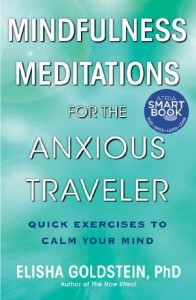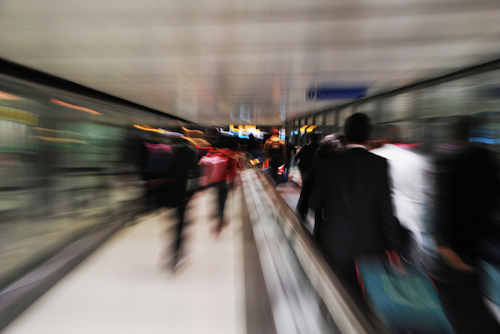

Just getting to the airport is bad enough, whether you are driving yourself, overpaying for a taxi, or negotiating yourself and your luggage onto a train, shuttle bus, or some combination thereof. Once arrived, you are herded like cattle through any number of gauntlets, stripping off shoes and articles of clothing, entrusting your irreplaceable valuables to indifferent, not-very-attentive strangers, and being interrogated, probed, photographed, and sniffed by machines and officious functionaries every step of the way.
Then there’s the plane itself—the scent of diesel fuel as you make your tortuous way down the aisle; the narrow seat with zero legroom; the exhausted air that’s already passed through the lungs of hundreds of fellow travelers. And that’s before you’ve even gotten off the ground and up into the stratosphere, where anything can go catastrophically wrong, or landed in a strange country where you don’t speak the language or understand the currency and don’t know whom to trust.
Traveling may be a lot more routine and a lot less hazardous than it was in the age of sailing ships and covered wagons, but it can challenge the equipoise of even the most frequent of frequent fliers. At its worst it can test the patience of the Buddha himself.
But here’s the thing: Your thoughts and feelings are not facts; they are only your thoughts and feelings. You can get a handle on them if you don’t allow them to overwhelm you.
In Mindfulness Meditations for the Anxious Traveler, Elisha Goldstein offers reassurance and a practical toolkit of exercises and insights that ease any passage. “The truth is,” he says, emending Jon Kabat-Zinn’s Wherever You Go, There You Are, “whether you’re waiting for a plane, sitting on the plane, or getting ready for landing, here you are. When we learn to embrace the hereness, all things come into place.”
One trick he suggests to avert a panic attack is to literally ground yourself—to sit in a chair and feel the connections of your feet against the floor, while you locate where the fear is manifesting itself in your body: in your chest, your abdomen, your throat, or the muscles of your back. When you find it, simply repeat the word “fear, fear, fear.” When you do so, you arouse the prefrontal cortex, the rational part of the brain, to produce a neurotransmitter called gamma-aminobutyric acid (GABA), which washes over the amygdala—your brain’s fear circuit—calming it down. “As you practice and repeat this exercise,” he says, “you can train your mind to put a space between you and your fearful experience, giving you freedom from the stress response and allowing you to gain perspective that everything is going to be ok.”
The trick I like the best (because it’s not a trick at all) is to “practice loving everyone”:
Take a moment to look around you and see who is there. All of those people are just like you, with the same deep desire to belong, to be accepted, to be loved.
As you read these words you sit in a “choice point.” Choose to picture all of them in your mind right now, sensing into your connection and saying, “Just like me.”
Pay sufficient attention to the moment and you can transform any trip into a pilgrimage. It’s what travel should be—it’s a miraculous world, after all, and it’s a privilege to experience it. Goldstein’s book can help you do just that.
Related Articles



